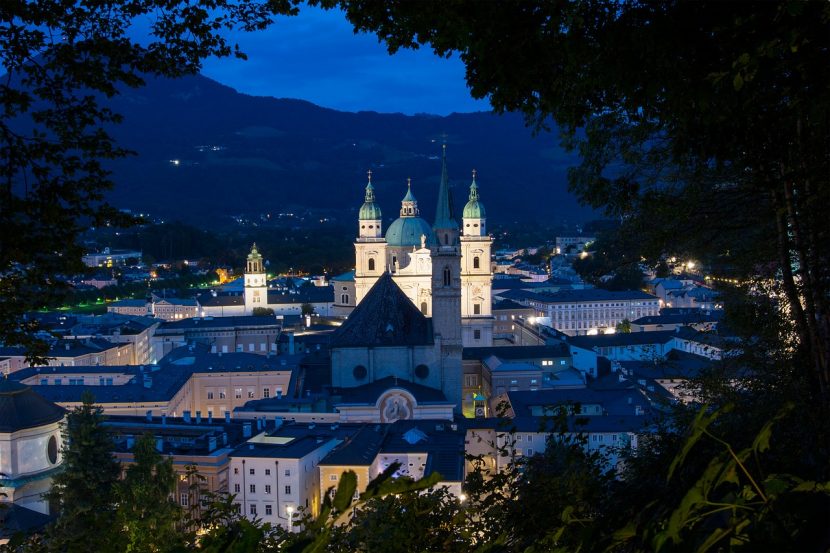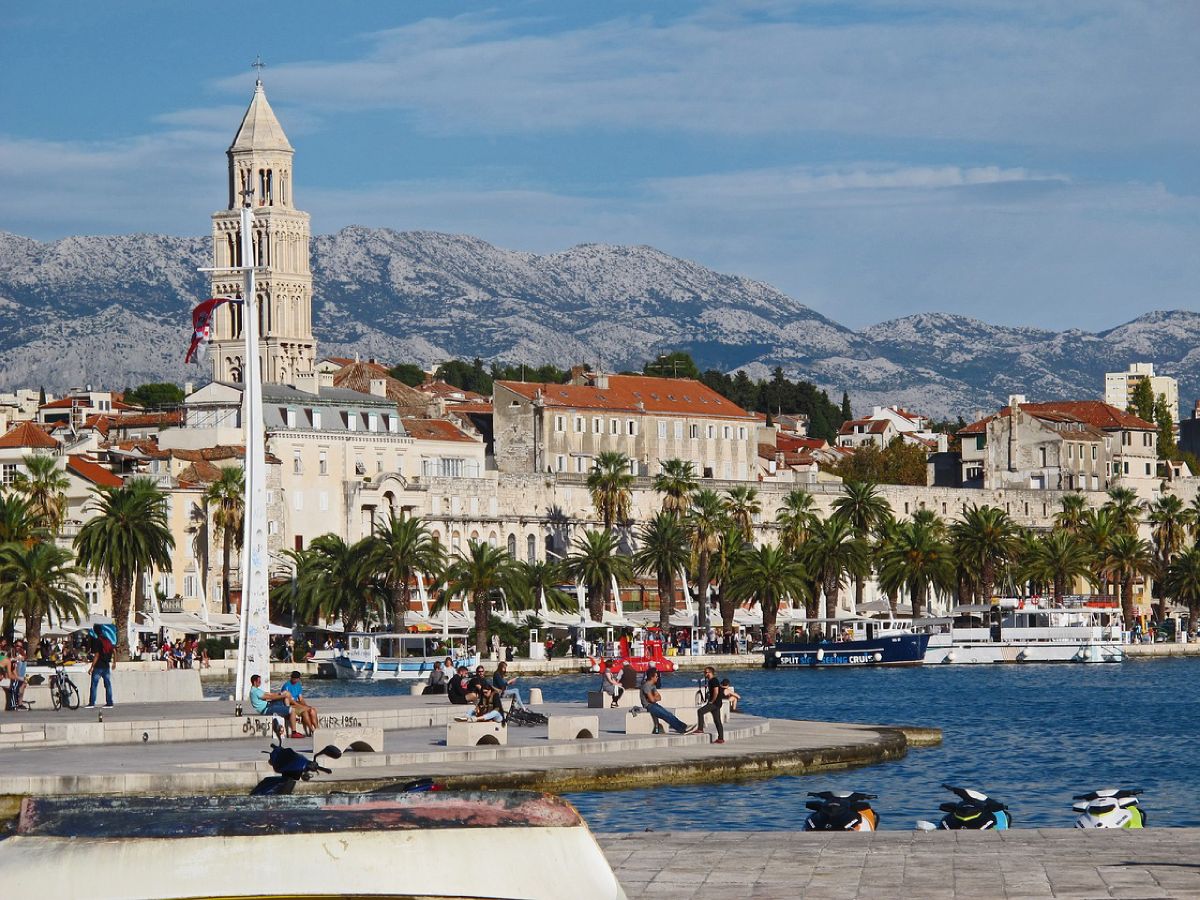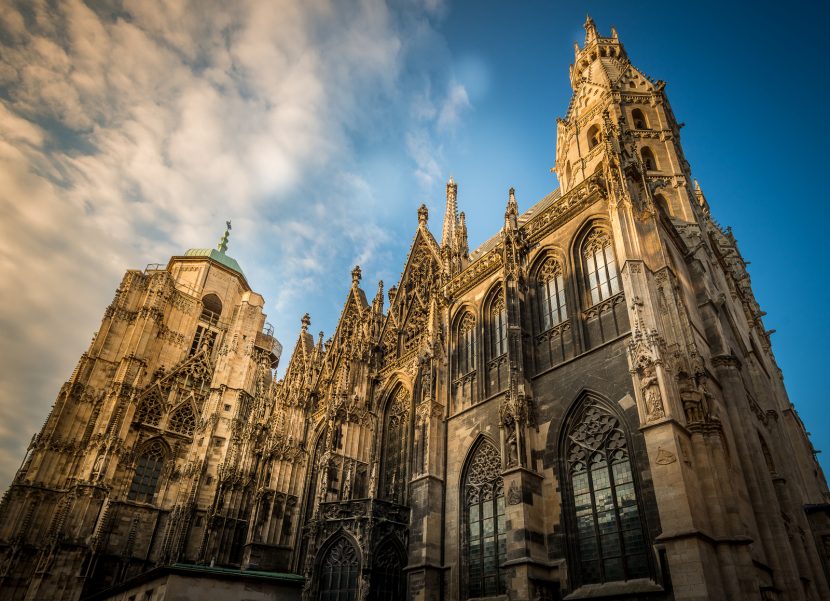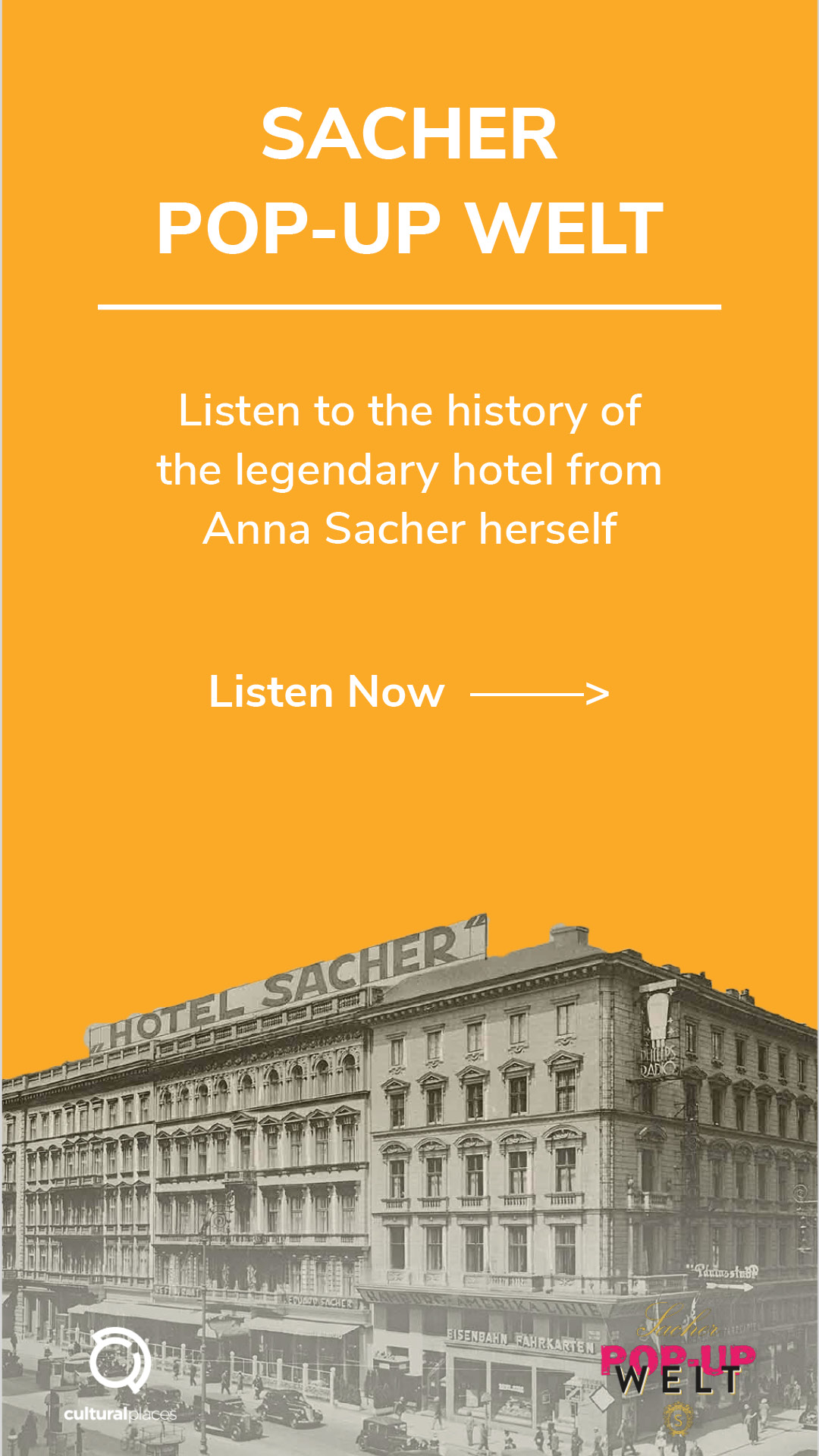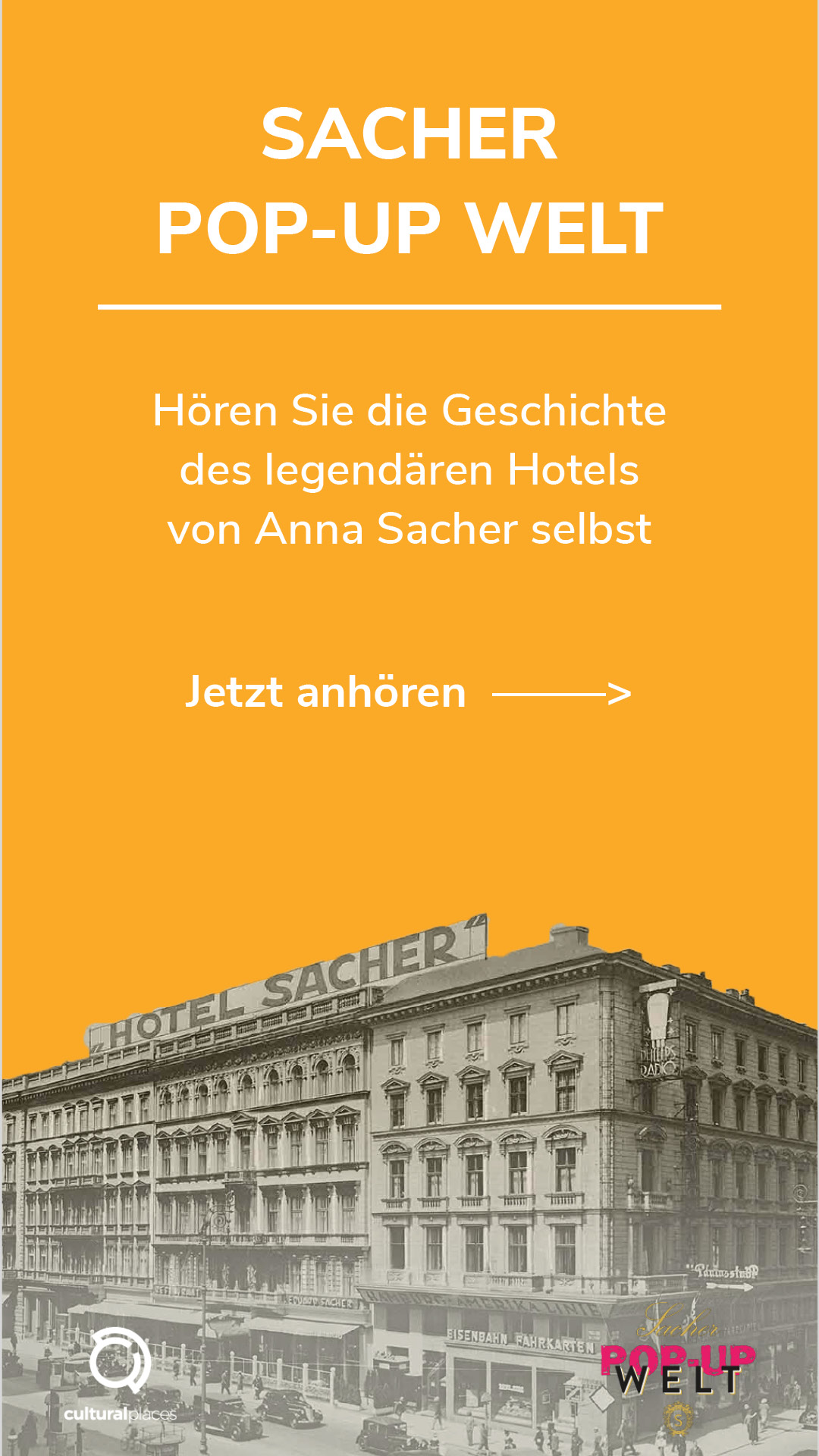Wander Through Vienna’s Famous Historic Streets
Are you up for learning some pretty interesting facts about Vienna’s famous historic streets? Every street of Vienna’s old city center has its history, and once you know a little bit about it, you appreciate the sights on those streets even more. If you’ve been to Vienna, this blog post will help you to understand the sights you already saw, and if you dream about traveling to Vienna one day, you can already get mentally ready to explore this magnificent city.
Ringstrasse
If you’ve ever been to Vienna, you probably know about Ringstraße (the Ring Road), the circular road that separates the historic Innere Stadt (Inner Town) — the 1st district from other Viennese districts. It is built on the locations where the medieval city walls once stood — it was a fortification with high walls and broad open field ramparts. The Ringstraße was built right after the walls were deconstructed, in the mid-19th century.
Along the road you can see many beautiful buildings, all built in the same historicist style, that is also known as Ringstraßenstil (“Ring Road style”), using elements of Classical, Gothic, Renaissance, and Baroque architecture. Because of that gorgeous architecture, this road was named a UNESCO World Heritage Site, and is often called the “Lord of the Ring Roads”.
If you want to check out the Ringstraße from above, we recommend checking out the exclusive Atmosphere Rooftop Bar located on top of the Ritz-Carlton hotel. Grab yourself a cool drink and enjoy the sundowner whilst marveling at the lovely Viennese skyline.
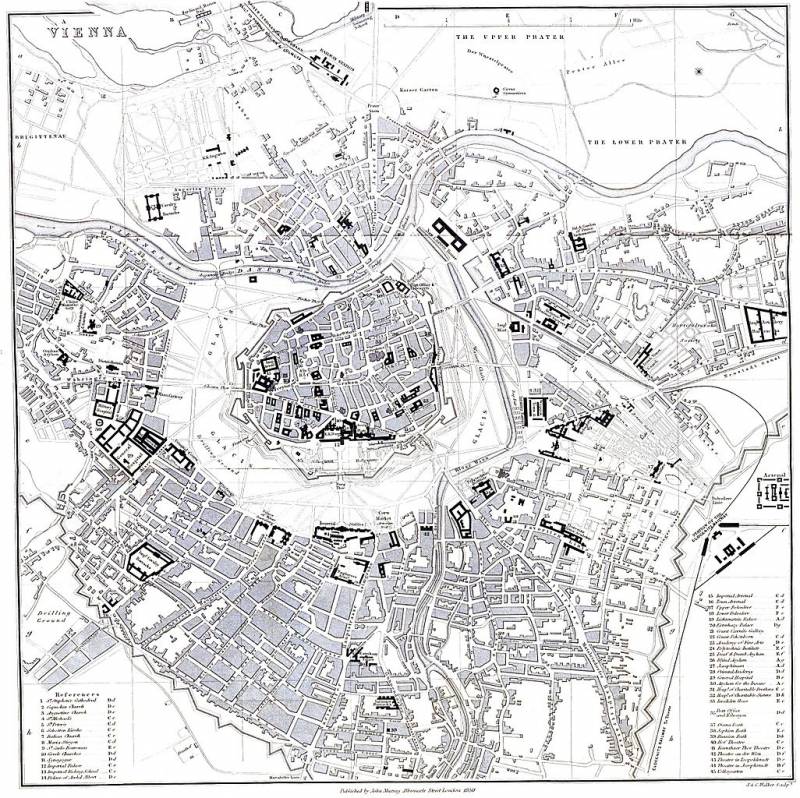
The map of Old Vienna, 1858 — You can see the Innere Stadt surrounded by the city walls
See larger map
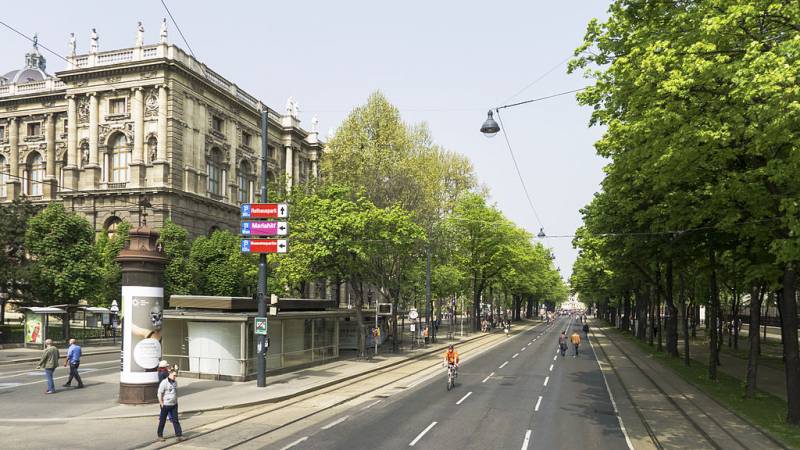
Ringstrasse — Burgring
(cc) Gugerell / cc0
Hoher Markt
Hoher Markt is the oldest square in Vienna and during the Middle Ages, it was one of the most important marketplaces in the city. Even though it was once a part of the Roman settlement, there are no ruins to be seen today except in the underground museum. But everywhere you turn you’ll see some amazing buildings! Some of the most impressive things to see here are the Wedding Fountain and the amazing Ankeruhr. The Ankeruhr is a large gilded clock in Art Nouveau style that shows different figures each hour and plays music in the background.
If you feel like you are down for a snack, check out Joma Vienna, a cute café located right next to the Ankeruhr. Our tip: try their Salmon Tataki Salad, we promise, you’re not going to regret it.
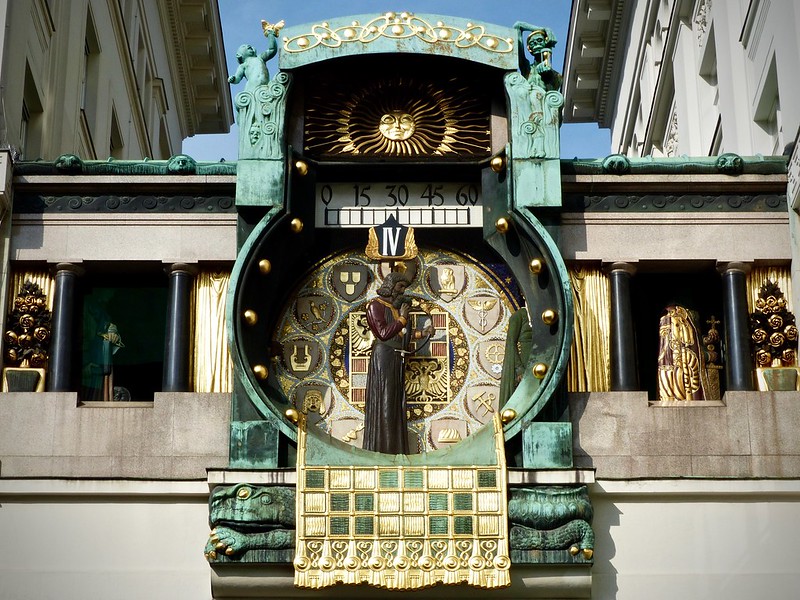
The Anker Clock (Ankeruhr)
(cc) Arjan Richter / CC BY 2.0
Fleischmarkt
Fleischmarkt or Meat market is a part of one of the oldest Viennese quarters, the Greek quarter. It was first mentioned in the 13th century and is known to be one of the oldest streets in Vienna. That’s where you’ll see the Julius Meinl House — an Art Deco building that was the first spice shop of Julius Meinl I.
Also, this is the street where you’ll find the oldest restaurant in Vienna, Griechenbeisl, that was visited by many famous people, such as Beethoven, Brahms, Schubert, and Strauss. Right next to this restaurant there is a beautiful building of Holy Trinity Greek Orthodox Church.
If you take a left here and walk into small and relatively hidden Griechengasse, you’ll find the smallest café in Vienna called Fenster Café (Window Café). Like the name already suggests, you’ll get your coffee served through a small window. If you want to try something new, go for their Cornettocchino, a chocolate-covered waffle filled with a cappuccino. Yum!

Fleischmarkt in the Greek Quarter
(cc) Gugerell / cc0
Herrengasse
Herrengasse is a gorgeous street in Innere Stadt, near Hofburg Palace, and home to many beautiful buildings. This street also existed in Roman times, and it was a part of the limes highway system. During the Middle Ages, one part of this street was called Hochstraße (High Street). The street became more popular at the beginning of the 16th century when Vienna was established as the imperial capital, and the nobility migrated to this part of the city. They all wanted their palaces to be close to Hofburg Imperial Palace, which was the residence of the Habsburg rulers.
The name changed a bit later when Vienna became the administrative center of Lower Austria and a place where the region’s representatives (which were gentlemen — German: Herren) gathered. Today, this street is a place with gorgeous architectural landmarks, small stores, and cafés.
Our tip: Don’t miss out on the historic Palais Ferstel! Built in 1860, it was the temporary location for the Vienna stock exchange. Later, the famous Café Central, until this day the epitome of Viennese coffee culture, was opened there. You can still pay a visit to Café Central, but beware, the line is usually quite long. If you don’t feel like waiting, check out the little cafés in the passage of the Palais (Ferstel Passage) and enjoy your coffee there.

Horse carriage in Herrengasse
(cc) Gryffindor / CC BY-SA 3.0
Graben Street
Graben is the most popular street in Vienna’s first district, which also dates back to Roman times when it was just a defensive ditch (“Graben“ means “ditch“ in German). The ditch was filled in the 12th century, and this area quickly became a marketplace. In the 14th century, the place got completely destroyed by a fire. However, not long after the unfortunate event it got rebuilt and became a residential neighborhood. The most famous resident of this street was Mozart, who lived there in the 18th century.
The street became a pedestrian area in 1974, and then it slowly became one of the most popular shopping streets in Vienna. One of the most famous things to see on this street is the Plague Column or the Holy Trinity Column. The column was erected after the Great Plague epidemic, in memory of its victims. This Baroque monument is one of the best-known landmarks of Graben street.

Graben street — one of the most popular shopping streets in Vienna
(cc) Pentcheff & Wetzer / CC BY-SA 2.0
Dirty Secrets of Vienna’s Streets
We love Vienna and its lovely streets — they’re full of historical and cultural landmarks. But these streets have their other side, their dirty little secrets that you’d surely love to know! Now you have the chance to find out about those secrets — we revealed them for you in our new digital tour “Love for Sale in Old Vienna”.
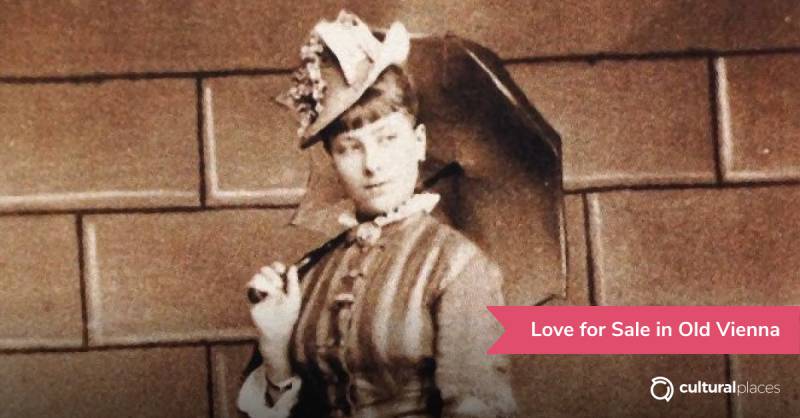
Love for Sale in Old Vienna — our new digital tour
You’ve heard a thing or two about the so-called oldest profession in the world, but have you ever really wondered how prostitution came to life? We did our research and put together a digital tour that will take you through the streets of Vienna’s historic city center — you wouldn’t believe what was happening on the Graben or Naglergasse before they became upscale shopping streets.
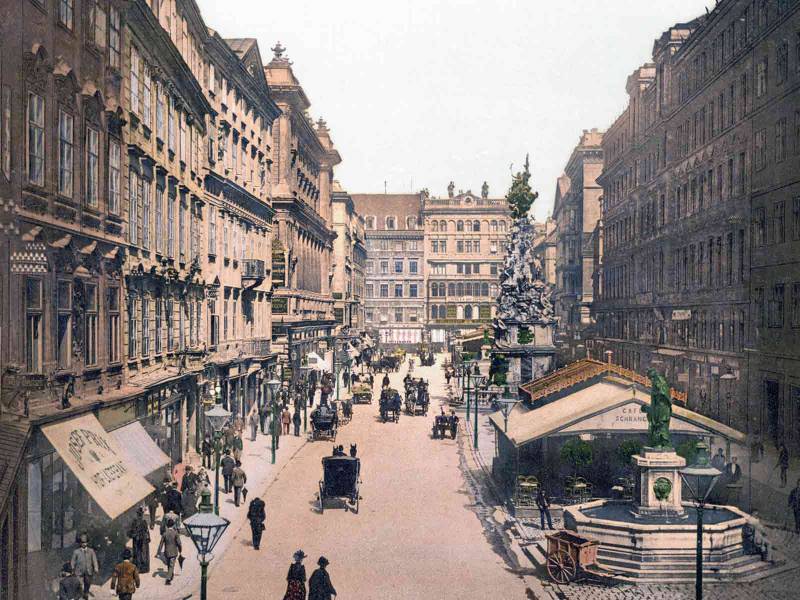
Graben street in 1900
There are plenty of secrets hidden among the historic streets of Vienna, but we won’t reveal all of them in this blog post — you can learn more about them in our digital tour! Hurry up, buy this tour, download it to your favorite device, enjoy these juicy stories and learn a little bit of the history of Vienna!
[maxbutton id=”2″ url=”https://www.culturalplaces.com/en/tour/love-for-sale-in-old-vienna?utm_medium=referral&utm_source=blog&utm_campaign=Love+for+Sale+Blog&utm_content=button” text=”Get the tour →” ]

